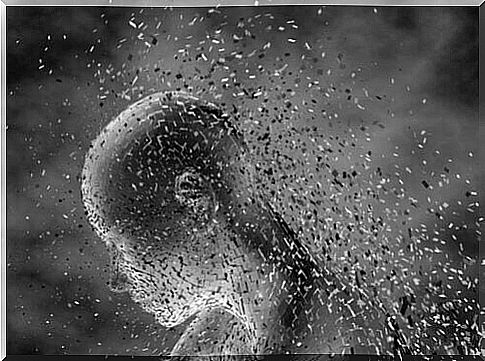Pantophobia: Concept, Symptoms And Treatment

There is an old Scottish proverb that “there is no cure for fear”. It would be a very serious problem for people suffering from pantophobia. In one way or another, we have all had the same feeling that severely handicaps these people: a strange fear of something that is unknown to us, that is hidden from us, that we are unable to explain.
This fear of the unknown has a name: pantophobia. If you have it, don’t worry, it is a phobia that responds well to a number of therapies. In this article, we want to talk about what it really is, what symptoms it causes, and how we can get rid of it or make it go away. As with all other phobias, the avoidance behavior in this case is also not valid, although it is the one we all tend to adopt naturally.
The concept of pantophobia
Pantophobia is a phobia which is a vague fear of an unexplained threat from an unknown source. It’s an irrational fear that unleashes without any logic. As with all phobias, the person understands how inappropriate this fear is. Additionally, this condition is known as “fear of everything” and is therefore called omniphobia, panphobia or pantophobia. However, the origin of the name can be found in the ancient Greek god Pan, who instilled fear in the people.
This phobia is characterized by excessive preoccupation with one or more events. It is considered a limiting phobia because it influences and conditions the behavior of the person who feels the fear.

The causes of panophobia
There are several causes that can cause this disorder. Usually, the patient does not remember when he first felt it, although he more often remembers when this fear started to become a major source of discomfort.
Typically, it is claimed that the origin is from more specific earlier phobias, such as arachnophobia or aviophobia. All of them can make a person more vulnerable to the phobia that is closest to them. Among the most common causes are the experience of traumatic events, genetic inheritance and also the own experience – one’s own or that of others – such as that of children who observed the fearful attitude of their parents or children. figures of reference and who, for example, were inoculated with this fear.
Symptoms of pantophobia
How do you know if you have this problem? There are a number of identifiable symptoms like irrational fear of objects, situations, people, animals, etc. The point is, the feeling of fear is constant and difficult to explain.
The problem can reach worrying levels when the affected person avoids situations, people and contacts because of this irrational fear. Now is the time to put yourself in the hands of professionals. The person may remain in a state of hypervigilance, suffering from a constant surge of adrenaline to maintain the level of activation that supports this continued vigilance.
In addition, patients often live with other mental problems, such as depression, sadness or anxiety. It also manifests itself in people with low self-esteem, high feelings of guilt, and low locus of control.
Sometimes there is a fear of losing control or a constant desire to run away from the stressful situation which the patien says causes the fear. A physical correlation can also be found: tremors, excessive sweating, dizziness, palpitations, tremors, restless breathing, vomiting, body and abdominal pain, and body tension.

Treatment of pantophobia
Fortunately, it is a phobia that has specific treatments. Of course, any of them will be applied after the evaluation of a qualified psychologist. As a specialist, he will be responsible for adapting the intervention to the characteristics of the patient. Some of the tools that are often used in the intervention on this phobia are:
- Systematic desensitization : aims to reduce anxiety reactions when exposed to feared situations and objects to eliminate flight reactions.
- Cognitive-behavioral therapy : it is based on the study of irrational and distorted beliefs that lead a person to develop the disorder so that they cease to perceive them as a danger.
- Self-instructions : derived from the previous therapy, they consist in changing the behavior of the affected person by verbalizing the situation that produces discomfort.
- Mindfulness : a complementary technique that invites the patient to live in the present moment, focusing on the here and now, accepting the unpleasant as part of their experience and relinquishing direct control.
- Medication : Medication may be needed in more severe cases, in which the patient has an extremely high phobia.
Fortunately, we can see that there are many tools available to professionals to plan a good intervention. But, for the intervention to be successful, a fundamental ingredient is missing: we want to talk about the attitude of the patient, who must be willing to work and trust the specialist so that the latter can treat him.










